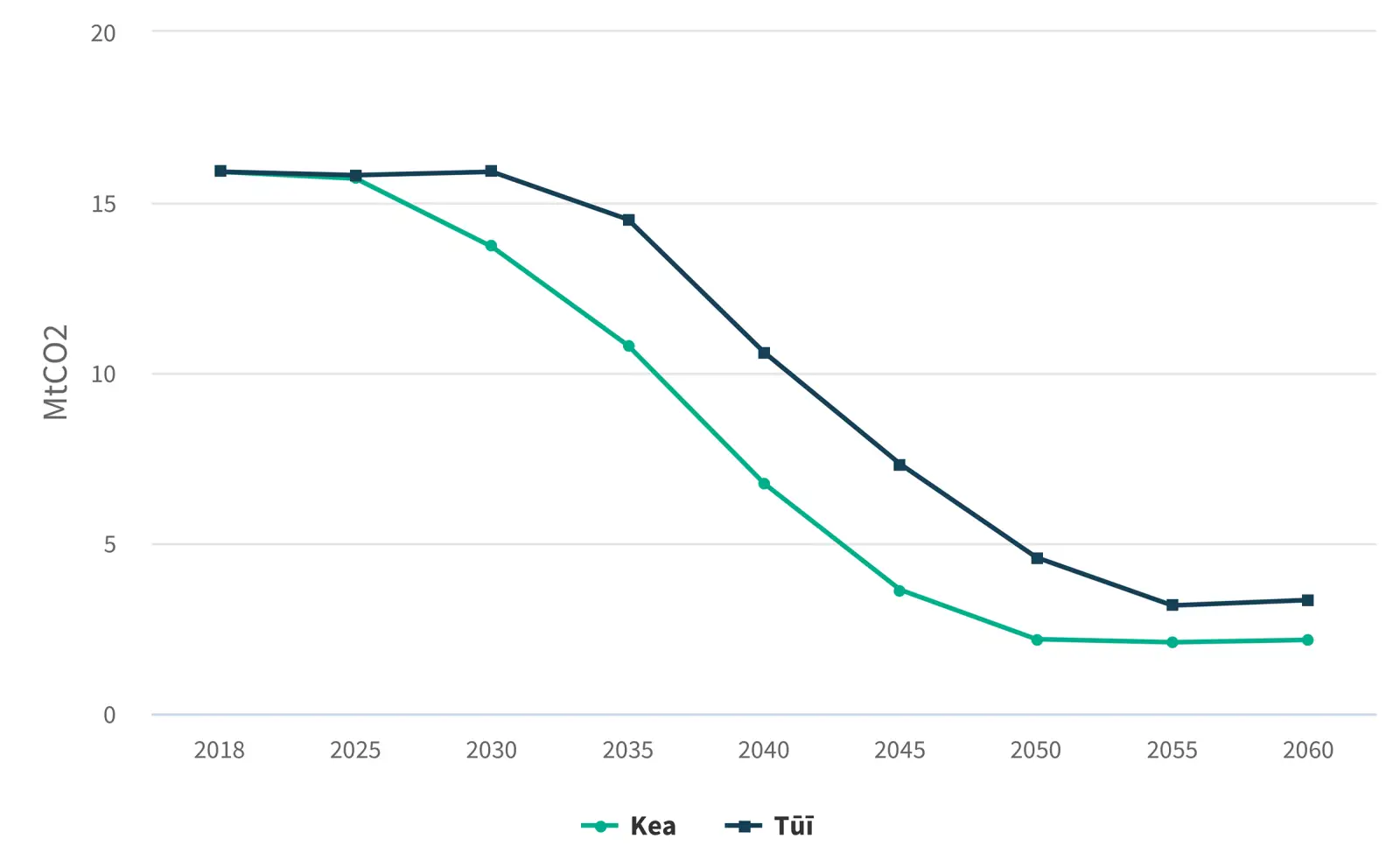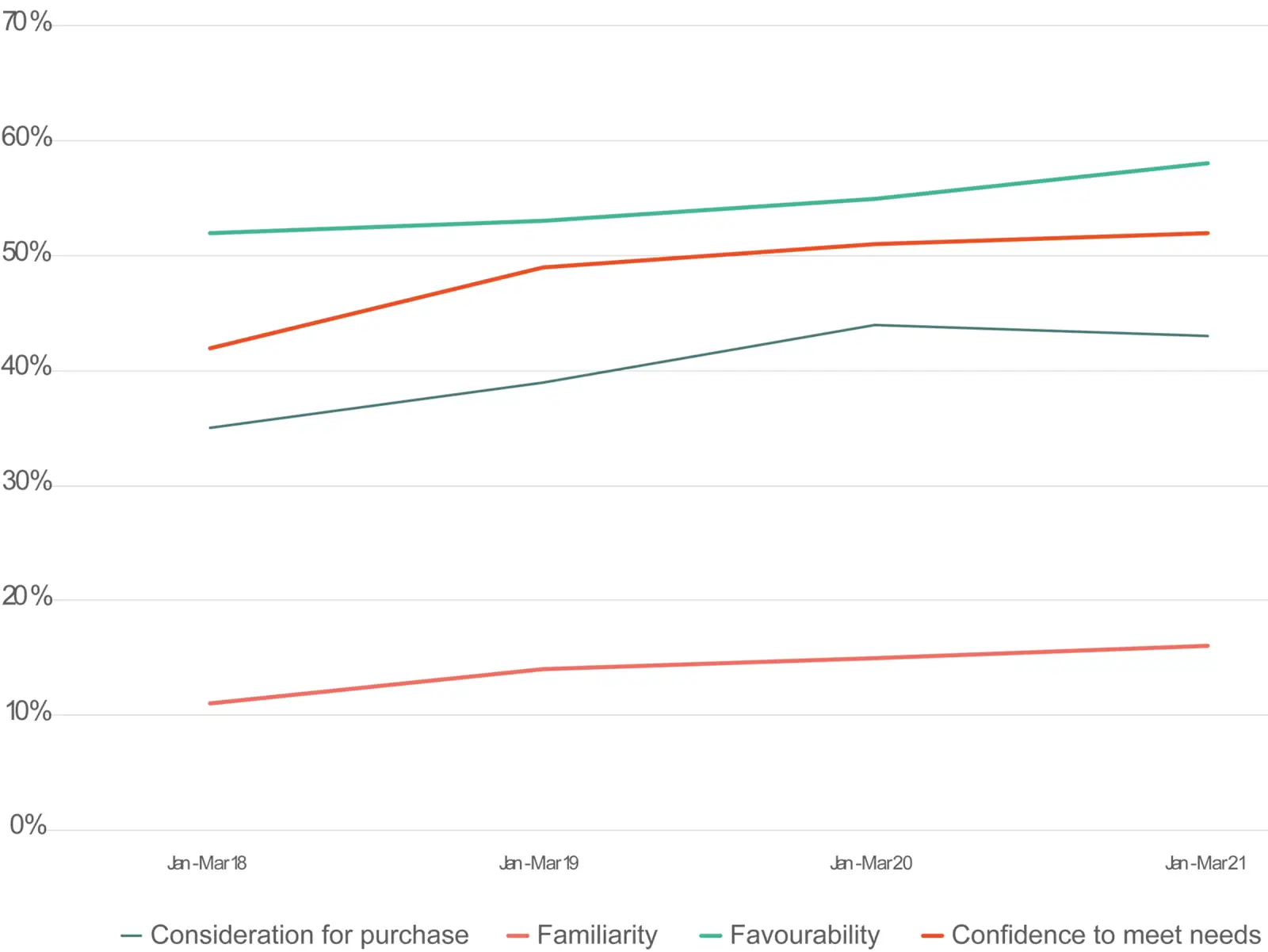With governments worldwide setting stricter fuel efficiency standards, vehicle manufacturers offering more electric and hybrid models, and some swearing off fossil-fueled vehicles for good, the tide is turning.
In New Zealand, the Climate Change Commission has recommended phasing out imports of fossil-fueled cars by no later than 2035.
Decarbonising the transport sector
Transport makes up 21% of the country’s carbon footprint, and most of that comes from the light vehicle fleet – cars, vans and utes. In 2019, light vehicles were responsible for almost 11MtCO2e emissions.
By the end of this decade more than 50% of monthly vehicle sales in New Zealand need to be electric in order to meet our emissions reductions targets. This requires a jump from about 6000 electric vehicles (bought in 2020) to annual sales of 150,000 electric vehicles (NZTA).
While they can't do the job alone, electric vehicles have an indispensable role to play in reaching net-zero emissions worldwide.
Reducing demand
Decarbonising transport won’t just be about EVs — it will be about reducing our car use overall, with some shift to public transport or active transport like cycling and walking, and more flexible ways of working, so we’re not all commuting every day.
- If every New Zealand household switched their car for a climate-friendly mode of transport for two short trips a week (two kilometre average), every week, we could save around 100,000 tonnes of carbon dioxide emissions each year.
- If one in five commuters switch the car for active transport (biking or walking), or even work at home one day a week, we could avoid 84,000 tonnes of carbon emissions each year.
Modelling future demand
In these energy future scenarios from EECA's TIMES NZ model, transport emissions fall dramatically in line with the fall in road transport fossil-fuel usage as light and heavy vehicle fleets electrify. In both scenarios, the residual emissions are from marine and aviation transport. The steeper reduction in Kea's transport emissions is from the more rapid uptake of EVs and lower growth in vehicle number compared to Tūī.
Transport emissions (MtCO2)

EVs have never been more popular
Worldwide, EV sales rose 41% in 2020, despite general car sales being down 16% due to the Covid-19 pandemic.
Eighteen of the world’s top 20 vehicle manufacturers have stated plans to increase the range of EV models available, and increase their production.
Read the IEA's Trends and developments in EV markets report(external link)
Favourability, confidence and consideration are growing
EECA has regularly surveyed Kiwi consumers about their attitudes to EVs since mid-2016, when there were fewer than 2,000 electric vehicles in the country. In that time, favourability, confidence and consideration have grown to their highest levels ever.

EV uptake in New Zealand
According to MoT, as at March 2022 there are:
- 38,117 EVs in NZ
- 3.3m Light vehicles in total
Running costs
EV owners benefit from cheaper running costs. Charging at home off-peak is like buying petrol at around $1.60/L (this includes road user charges). And battery EV motors have so few moving parts there is less to maintain or go wrong.
Our Total Cost of Ownership calculator adds up all the costs related to buying and operating a vehicle, and then subtracts the residual value of the vehicle — the price it can be sold for — to give users a clearer idea of the total cost of owning the vehicle over a term.
How will New Zealand cope with more EVs?
Electricity demand
If all light vehicles in New Zealand were electric, our current total electricity demand would increase by around 20%, EECA estimates. This could be accommodated within the normal growth and replacement cycles of New Zealand's electricity infrastructure system (even allowing for the uncertainties of renewable generation), provided the majority of EVs are charged during off-peak periods.
Smart charging can smooth peak demand and reduce the risk of EVs overloading the electricity system. It presents an opportunity to reduce costs to consumers and increase the use of clean, renewable energy. A range of programmes are also underway to ensure the electricity network can support increased EV uptake:
- The government is considering the role of emerging technologies, such as smart chargers and vehicle-to-grid capability, to mitigate the impact on the electricity network and identify any regulatory barriers to their uptake.
- EECA has published voluntary guidance for residential and commercial EV chargers to provide consumers and businesses with quality guidance on safe, efficient, and smart chargers.
Download the guidance for residential EV chargers(external link)
Download the guidance for commercial EV chargers(external link)
Public charging availability
Most people charge overnight at home, which will easily cover day-to-day driving needs.
You don’t need a public fast charger in your neighbourhood to own an EV. Most EV owners charge at home most of the time and find it way more convenient than visiting petrol stations used to be. And EVs aren’t just for townies either, charging on the farm could save you those annoying trips to town just to get fuel.
There are public chargers available every 75km on the country's highways.
EECA is working with MOT, NZTA and MBIE to develop a strategic roadmap for New Zealand’s future EV charging network to ensure public funding support is well targeted and delivers the coverage, density and capacity required as the electric vehicle fleet increases.
How much better for the environment are EVs?
"An EV used in Aotearoa emits about 60% fewer emissions over its full life cycle than an equivalent petrol vehicle. This is the case even when accounting for emissions from raw material extraction, manufacture, and shipping. This figure will improve as Aotearoa phases out fossil fuels in electricity generation and as global efforts decrease emissions from EV supply chains."
Climate Change Commission
An independent report we commissioned on EV lifecycle emissions found:
- CO2: 80% reduction in CO2 emissions for EVs when used in New Zealand, and 60% reduction in CO2 emissions across lifecycle. (A more recent report has found the emissions reduction from EVs to be as high as 90% – Electric Homes Technical Report, 2024)
- Cumulative energy demand: EVs use 40% less energy.
- Particulate matter emissions (e.g. exhaust emissions, raw material refining): EVs are better and have no tailpipe emissions.
- Photochemical oxidation (related to the formation of smog): EVs 50% less photochemical matter.
- Resource depletion: no significant difference.
-
Even with some coal-powered electricity...
Even if thermal (coal) electricity generation increases during dry periods, as it did in early Winter 2021, EVs will still have a lower on-the-road carbon footprint, as renewable generation still makes up around 80% of supply, while petrol and diesel are always 100% non-renewable. And while there is some coal-powered electricity now, there won't be for long, whereas new petrol cars will be in the fleet for 15-20 years. Even if your EV was fully recharged using coal power, coal produces approximately 0.16kg of carbon dioxide per kilometre driven; petrol emits 0.23kg per kilometre. -
... EVs still have a lower carbon footprint
A recent IEA analysis shows that from a lifecycle perspective (which includes emissions related to vehicle manufacturing, use and end-of-life) EVs today provide lifecycle GHG emissions reductions of around 20-30% relative to conventional ICE vehicles on a global average. These benefits are more pronounced in countries where the power generation mix is rapidly decarbonising, such as the European Union, where BEV lifecycle emissions are around 45-55% lower.
Battery use, reuse, and recycling
Battery technology
The technology behind lithium-ion batteries, which power EVs, smart phones and many other devices, is advancing at pace. While a range of 300km-600km is normal in a new EV now, manufacturers are working towards longer ranges and at the same time demanding clarity in the supply chain for minerals such as cobalt and lithium to ensure good environmental and human rights practices.
Read the IEA report: The Role of Critical Minerals in Clean Energy Transitions(external link)
What happens to old batteries?
An EV battery should last 10-20 years before it degrades to a point it no longer provides useful range.
At that point, it can be refurbished or replaced. Sometimes it’s possible to just replace the dead cells within a battery. If a full replacement is required, you may be able to improve the range of your EV by installing a new battery with more capacity.
The used battery still has value. It can be refurbished, repurposed or recycled – for example, to store electricity from solar PV panels, or raw materials reclaimed. You may even be paid for the old battery.
Members of the Motor Industry Association of New Zealand (MIA) have committed to a code of practice to have suitable systems in place or the use, capture, return, refurbishment, reuse, recycling or disposal of EV and hybrid batteries, with the aim that no batteries end up in landfills.
What is New Zealand doing to recycle EV batteries?
New Zealand is developing ways to refurbish, repurpose and recycle EV batteries.
EECA is a member of the Battery Industry Group (BIG)(external link), a group formed to find circular economy solutions for large lithium-ion batteries when they reach their end of life.
The Ministry for the Environment has a work programme to take action on problematic waste streams including lithium-ion batteries.
Read about what the Government is doing about waste(external link)
Keep reading
-
Reasons to buy an electric vehicle
Cleaner, quieter, cheaper to run - and that's just a few of the reasons to buy an EV.
-
EV benefits for business
Lead the pack – and save running costs – by switching up your business fleet.
-
Assess fleet total cost of ownership
Choosing vehicles by looking at the total cost of ownership could make a big difference to your bottom line and carbon footprint.


